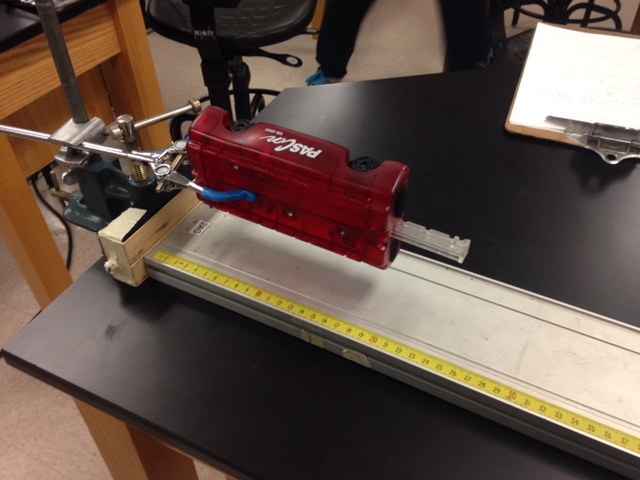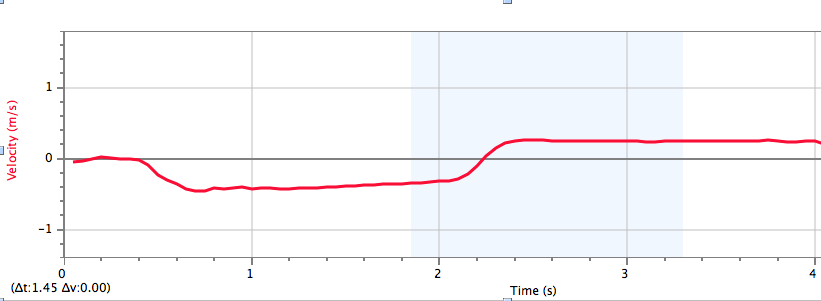The purpose of this lab was to verify the conservation of momentum in a two dimensional collision by using to equal masses and two different masses.
Apparatus:
The apparatus provided featured a column with a camera attached to the top connected to a laptop. Below it stood a glass table where the collision would take place. Camera captured the collisions as the balls began to move until the wanted data was collected and displayed on logger pro on the laptop. The first collision required two equal mass steel balls while the second collision consisted of one steel ball and a marble of different mass.
Experiment:
Starting with the equal mass collision we placed one of the steel balls in the center of the glass table so that it remained stationary until impact. Once done we took the second steel ball and pushed it toward the stationary ball diagonally creating an impact where the balls resulted in moving in significantly different directions all while recording the collision with the camera placed on the column. Once the video was recorded we saved it on a flash drive to further analyze it and allow our fellow classmates to use the apparatus.
Continuing onto the different mass collision we placed the marble of lesser mass in the center of the glass table so that it remained stationary just as the other ball in the first part of the experiment. Follow the same steps before we took the heavier steel ball and pushed it diagonally towards the stationary marble. Once again we took the recorded video and saved it onto a flash drive for further observation.
After collecting the video recordings we continued to analyze the videos using logger pro by establishing an axis of movement, plotting the position points, and creating a reference distance.
After using the features we were able to generate graphs for the position vs time of the balls as they moved across the glass table.
By taking a linear fit for each position vs time data set, we are able to find the average velocity of each ball before and after the collision in the x and y directions.
Using the velocities recorded by logger pro, the values for momentum of each axis can be solved for using the "Calculated column" tool in logger pro using the definition of momentum:
momentum = mass * velocity
Using all the data up to this point we create the data table shown below:
Further analyzing the total momentum for both experiments we are give the momentum vs time graphs for both the x and y direction.
The graphs appear to be consistent with few dips, meaning that the momentum is conserved throughout the experiment.
Conclusion:
I believe the experiment was successful in proving the conservation of momentum despite the small concavity depicted in the graphs of momentum. The factor that effected this result consists of human error with inconsistent plotting of point on the collision video as well as the friction experienced by the balls with the glass table.





.png)




























